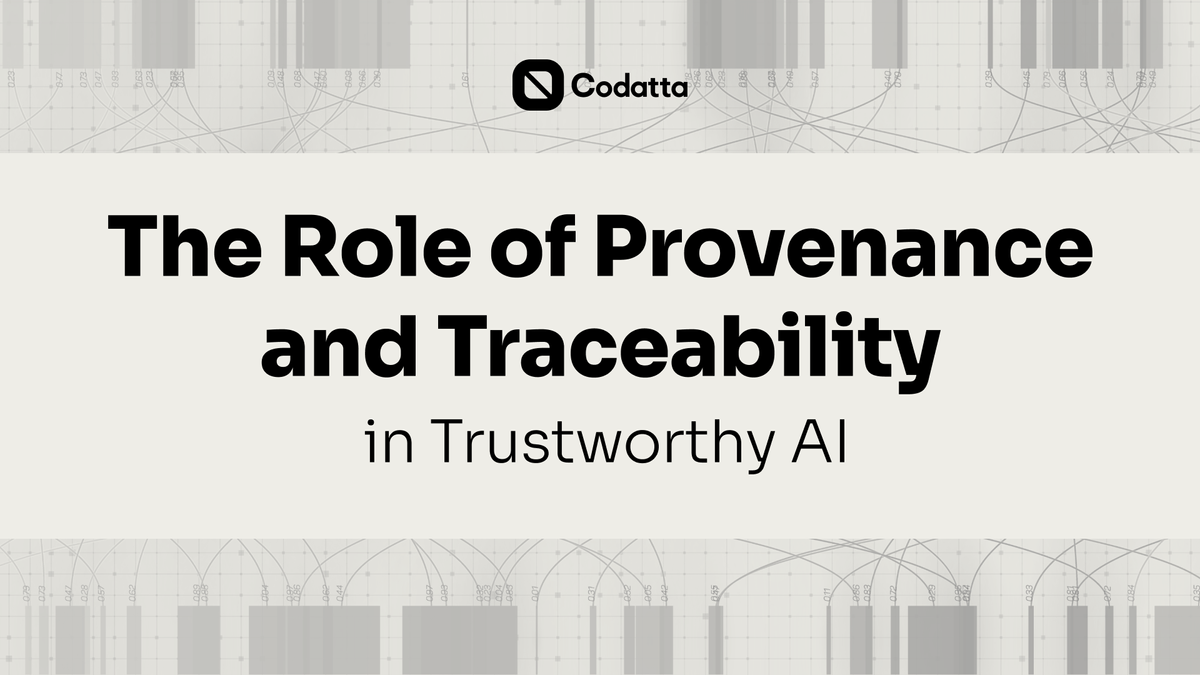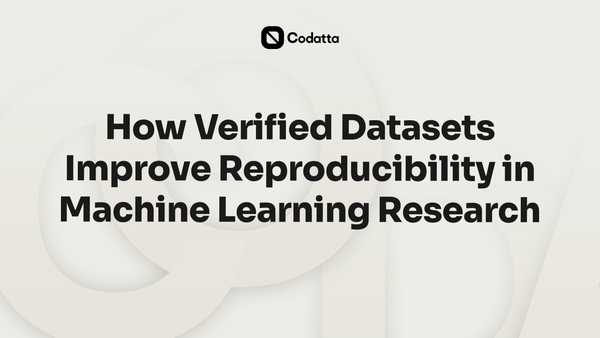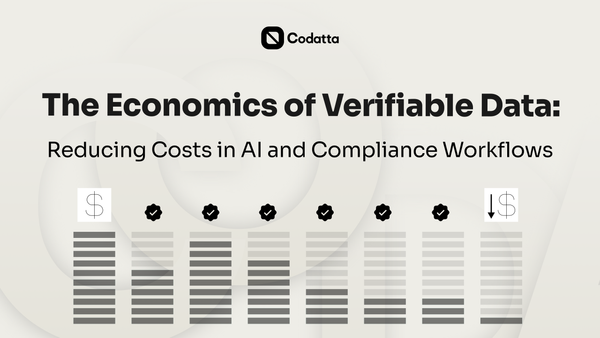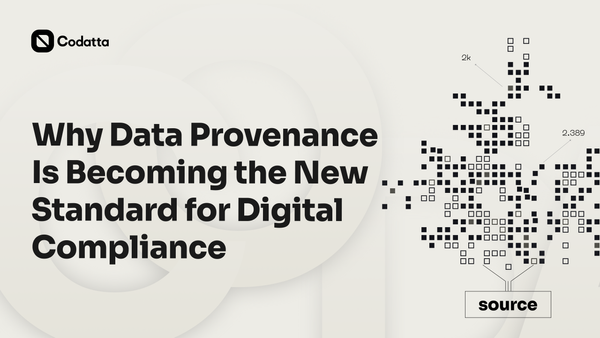The Role of Provenance and Traceability in Trustworthy AI

AI is only as reliable as the data it learns from. Without provenance and traceability, it becomes difficult to confirm where data came from, how it was handled, and whether it is fit for training an AI system or machine learning model. Gaps in provenance information weaken transparency, accountability, and data integrity, making it harder to deliver trustworthy AI.
As AI development expands into critical areas like healthcare, finance, and public services, the demand for verifiable data sources and clear data governance continues to grow. Provenance data and provenance tracking give developers the visibility they need to evaluate training data, improve learning models, and build frameworks for responsible AI.
Read on to see why provenance and traceability are becoming essential to artificial intelligence, and how they support the creation of more trustworthy systems and applications.
The Risks of Data Without Provenance
When data is used to train AI systems without clear provenance documentation, it creates serious risks. Centralized datasets often lack an audit trail, meaning there is no reliable history of data use or visibility into how information was collected, labeled, or maintained. This weakens data quality and undermines trustworthy AI systems.
AI developers and practitioners are already aware of these challenges. The EU AI Act and the High-Level Expert Group on AI both highlight the importance of data provenance practices and data governance as key requirements for trustworthy and responsible AI. Without robust data provenance, companies cannot ensure accountability in AI systems or meet emerging standards for AI regulation.
The absence of provenance in AI also fuels duplication, errors, and biases in AI. If AI data is copied across multiple projects without provenance management or provenance tools, the same mistakes get repeated. This affects the trustworthiness of AI systems and limits explainability, especially as generative AI and other AI technologies expand into sensitive areas like healthcare and finance.
Ethics guidelines for trustworthy AI emphasize that provenance provides the visibility needed to embed transparency into AI development and deployment. Provenance allows AI companies to explain decisions, improve data quality, and ensure responsible AI development. Traceability is a key component here: provenance in AI systems makes accountability possible, while the lack of it results in unreliable outcomes.
In short, provenance is vital for ensuring ethical AI practices. A standard data provenance framework could help AI developers and organizations maintain trustworthy data, reduce biases in AI systems, and support the future of AI innovation. Without it, the trustworthiness of AI models and systems remains uncertain.
Provenance as the Foundation of Trustworthy AI
Trustworthy artificial intelligence depends on more than powerful algorithms. Actually, it requires confidence in the data behind them. Provenance provides verifiable records of where data originated and how it has been handled, making it possible to assess reliability before the data is used in any AI application. In this sense, a clear provenance model is essential for both AI developers and organizations that rely on responsible data governance.
Provenance helps reduce uncertainty by showing when and how information was collected, labeled, and modified. This level of traceability strengthens data integrity and supports the use of AI in high-stakes environments. It also enables explainable and trustworthy AI, because decisions made by AI systems can be linked back to the underlying data and its documented history.
The importance of provenance is particularly visible in regulated sectors such as finance and healthcare, where the use of AI must meet strict compliance standards. In these fields, traceability is not optional: it ensures accountability, helps protect sensitive information, and provides assurance that AI technologies are deployed responsibly. Without robust provenance, organizations risk unreliable outcomes and difficulty meeting legal or ethical requirements.
How Web3 Strengthens Traceability
In the context of AI, provenance refers to the ability to trace where information originated and how it was processed before becoming data used to train models. Blockchain technology adds an important layer here by creating transparent and immutable records that can be verified independently. It makes accountability and traceability easier to enforce across the entire application of AI.
Web3 technologies also give contributors more control over their participation. Instead of user input disappearing into centralized datasets, individuals can decide how their contributions are recorded and shared. This strengthens data privacy while still ensuring AI systems have access to high-quality inputs.
Incentive models supported by blockchain, such as token rewards or royalties, encourage accurate, community-led data sharing. Contributors gain a stake in the ongoing use of their work, while AI developers benefit from cleaner, more transparent datasets. This alignment of incentives helps in ensuring AI remains accountable, reliable, and better suited for real-world applications.
Codatta’s Role in Enabling Provenance
Codatta addresses one of the core challenges in the nature of AI: data without a clear lineage. By using metadata annotation and confidence scoring, the protocol helps AI practitioners work with cleaner, more reliable datasets. This reduces duplication and errors, while also making it easier to embed provenance into the data lifecycle.
On-chain records act as data provenance tools that protect integrity and provide contributors with recognition and ongoing rewards. Instead of contributions disappearing into centralized systems, provenance ensures that the value of each submission remains visible and tied to its future use.
These capabilities matter in real use cases. In blockchain risk analysis and fraud detection, verifiable data is crucial for identifying suspicious accounts or transaction patterns. In healthcare, provenance ensures that data used for diagnostics or research can be traced and validated. For IoT, where vast streams of information power different applications, traceability helps maintain trust and usability at scale.
By linking data provenance to transparent rewards and on-chain accountability, Codatta offers a practical model for improving trust in how AI and Web3 use data.
Why Traceability Matters for Adoption
Trustworthy AI adoption depends on verifiable and transparent datasets. Without clear records of where information comes from and how it is handled, AI capabilities are limited, and the outcomes of AI systems become harder to trust. Provenance reduces these risks by making data use traceable, accountable, and easier to validate.
Data provenance helps organizations meet emerging requirements for transparency and accountability. Standards for data provenance and data governance are already highlighted in frameworks such as the EU AI Act and the Ethics Guidelines for Trustworthy AI, which emphasize the importance of data provenance and data lineage in responsible development. These standards guide AI practitioners in building systems that are explainable and reliable.
For adoption in critical fields like finance, healthcare, and security, traceability is not just a technical option but a requirement. Verifiable records of training data and lineage make it possible to ensure compliance and build confidence in the application of AI.
Codatta contributes to this shift by giving contributors and developers access to cleaner datasets, confidence scoring, and on-chain records that support traceability. While no single tool can guarantee responsible AI on its own, systems like Codatta form part of the foundation needed for future-ready AI and Web3 innovation.
Conclusion
Provenance is a critical requirement for building responsible AI. Without a clear lineage, it is impossible to verify the quality of the data used in training or to ensure accountability in AI systems. Data provenance provides the foundation for transparency, compliance, and reliable outcomes across industries.
In practice, provenance refers to the detailed record of how data is collected, processed, and applied. This record allows organizations and practitioners to evaluate trustworthiness and reduce risks in the use of AI.
Community-driven platforms like Codatta demonstrate how provenance and traceability can move from theory to application, offering tools for cleaner datasets, contributor rewards, and on-chain accountability. Together, these elements support the adoption of more responsible and trustworthy AI.




